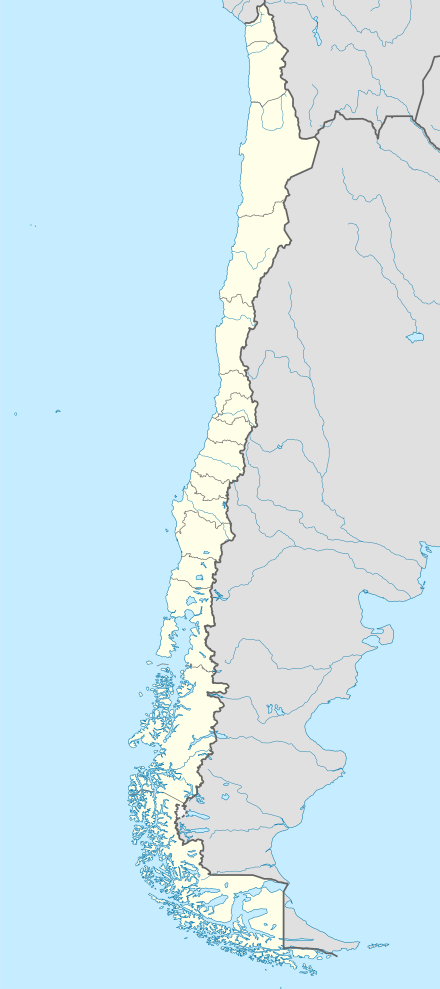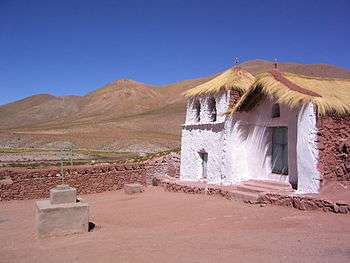El Loa
El Loa Province (Spanish: Provincia El Loa) is one of three provinces of the northern Chilean region of Antofagasta (II). It is named after the longest of rivers in Chile, the Loa River. The provincial capital is Calama.
El Loa Province Provincia El Loa | |
|---|---|
 Miscanti Lake | |
 Seal | |
 Location in the Antofagasta Region | |
 El Loa Province Location in Chile | |
| Coordinates: 22°50′S 68°07′W | |
| Country | |
| Region | |
| Capital | Calama |
| Communes | Calama Ollagüe San Pedro de Atacama |
| Government | |
| • Type | Provincial |
| • Governor | María Bernarda Jopia Contreras (RN) |
| Area | |
| • Total | 41,999.6 km2 (16,216.1 sq mi) |
| Population (2012 Census)[1] | |
| • Total | 142,686 |
| • Density | 3.4/km2 (8.8/sq mi) |
| • Urban | 138,538 |
| • Rural | 5,151 |
| Sex | |
| • Men | 73,970 |
| • Women | 69,719 |
| Time zone | UTC-4 (CLT [2]) |
| • Summer (DST) | UTC-3 (CLST [3]) |
| Area code(s) | 56 + 55 |
| Website | www |
Geography and demography
According to the 2012 census by the National Statistics Institute (INE), the province spans an area of 41,999.6 km2 (16,216 sq mi)[1] and had a population of 142,686 inhabitants, giving it a population density of 3.4/km2 (9/sq mi). It is the sixth largest province in the country. Between the 1992 and 2002 censuses, the population grew by 14.9% (18,610 persons).[1]
Communes
- Calama (capital)
- Ollagüe
- San Pedro de Atacama
gollark: "Find useful stuff" also sounds pleasantly easy, but it's *not*. Even a human reading a repository or paper may struggle to find "useful" bits; reasoning about the relevance of a new set of information or methods for a project is a difficult general intelligence task.
gollark: I mean, "list of AI" is probably easy enough, you could just... search github using some keywords, and maybe research papers.
gollark: Just because you can describe a task in a sentence or so doesn't mean you can give a description clear and detailed enough to think about programming it.
gollark: Early attempts at AI back in the last millennium tried to create AIs by giving them logical reasoning abilities and a large set of facts. This didn't really work; they did some things, hit the limits of the facts they had, and didn't do anything very interesting.
gollark: They don't even have *memory* - you just train the model a bunch, keep that around, feed it data, and then get the results; next time you want data out, you use the original model from the training phase.
References
- "Territorial division of Chile" (PDF) (in Spanish). National Statistics Institute. 2007. Archived from the original (PDF) on 14 November 2010. Retrieved 18 March 2011.
- "Chile Time". WorldTimeZones.org. Archived from the original on 2007-09-11. Retrieved 2010-07-28.
- "Chile Summer Time". WorldTimeZones.org. Archived from the original on 2007-09-11. Retrieved 2010-07-28.
This article is issued from Wikipedia. The text is licensed under Creative Commons - Attribution - Sharealike. Additional terms may apply for the media files.

